Flying is one of humanity’s most impressive engineering achievements. But behind the graceful motion of an airplane in the sky lies a deep science: aerodynamics. In this blog post, we’ll break down the theory of flight, exploring the aerodynamic principles that allow aircraft to fly.
Section 1: What is Aerodynamics?
Aerodynamics is the study of how gases (usually air) interact with moving objects. In aviation, it focuses on how air flows around an aircraft and the forces generated by this interaction.
Key Concepts:
- Airflow: Movement of air over surfaces.
- Streamlines: Imaginary lines representing airflow direction.
- Drag and Lift: Two critical aerodynamic forces.
Diagram of airflow streamlines around a wing (airfoil) – showing laminar vs turbulent flow.
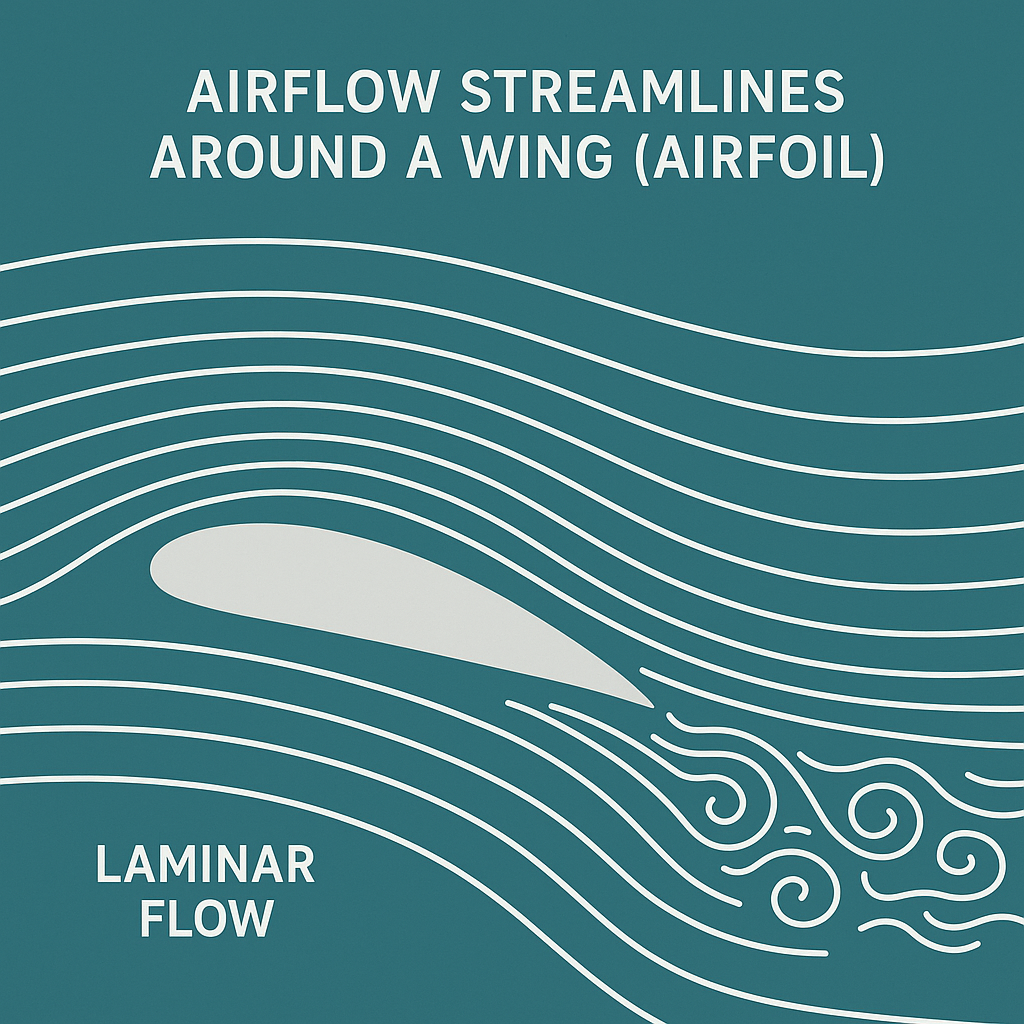
Section 2: The Four Fundamental Forces of Flight
An aircraft in flight experiences four key forces, and successful flight requires a balance between them.
| Force | Direction | Description |
| Lift | Upward | Generated by wings to counter gravity |
| Weight | Downward (Gravity) | The aircraft’s mass pulling it down |
| Thrust | Forward | Produced by engines or propellers |
| Drag | Backward | Resistance from air against the aircraft’s motion |
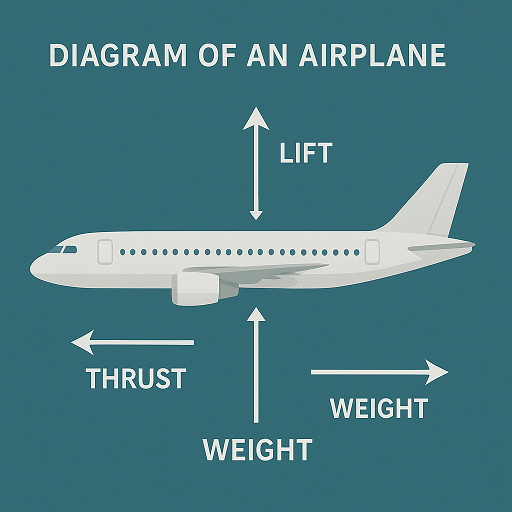
Diagram of an airplane showing arrows for lift, weight, thrust, and drag directions.
Section 3: Bernoulli’s Principle and Lift
The Bernoulli Principle explains one way lift is generated.
- Faster airflow = lower pressure.
- Wing shape (airfoil) causes air above the wing to move faster than below, creating lower pressure above and higher pressure below.
Equation:
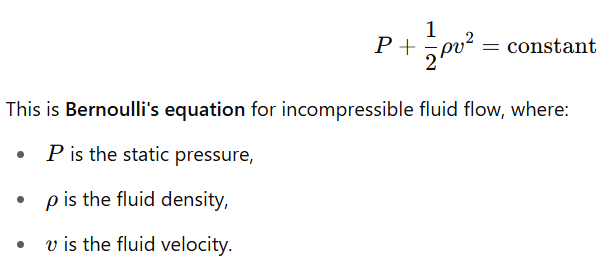
Cross-section of a wing with airspeeds and pressures annotated above and below.
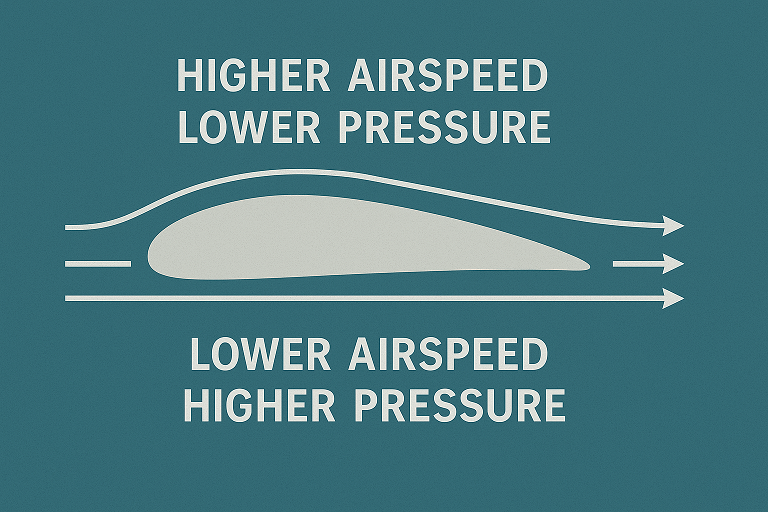
Section 4: Newton’s Third Law and Lift
Bernoulli’s principle isn’t the whole story. Newton’s Third Law (every action has an equal and opposite reaction) also plays a role:
- Wings deflect air downwards → The reaction force pushes the wing up = lift.
Diagram of wing deflecting air downward, showing action-reaction force pair.

Section 5: Drag – The Air’s Resistance
Drag slows the aircraft down. There are two primary types:
- Parasite Drag – Caused by the shape and surface of the aircraft.
- Induced Drag – A byproduct of lift, especially noticeable at low speeds.
Comparison of streamlined vs boxy aircraft shapes showing drag differences.

Section 6: Thrust – Powering the Aircraft
Thrust is what propels an aircraft forward. It’s generated by:
- Jet engines – High-speed exhaust gases.
- Propellers – Spinning blades pushing air backward.
Cutaway image of a jet engine with airflow and thrust direction arrows.
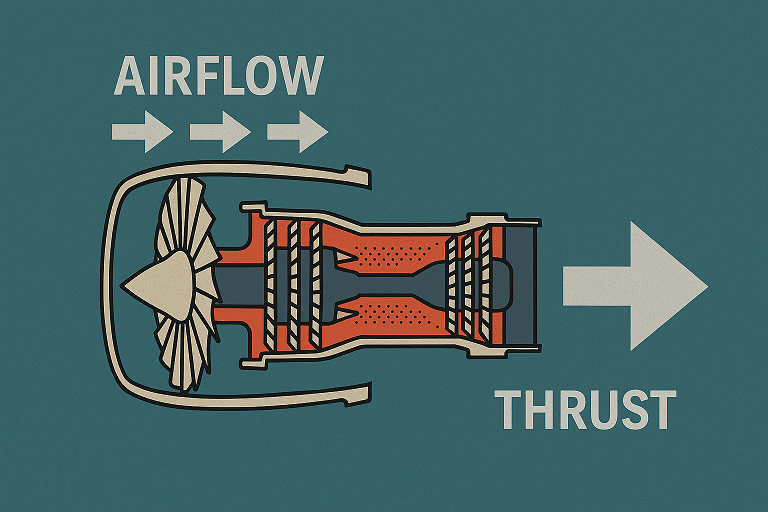
Section 7: Angle of Attack (AoA)
The Angle of Attack (AoA) is the angle between the wing chord line and the direction of airflow. It’s crucial for generating lift.
- Too low = insufficient lift.
- Too high = stall (loss of lift).
Diagram of wing showing increasing AoA and eventual airflow separation at stall.
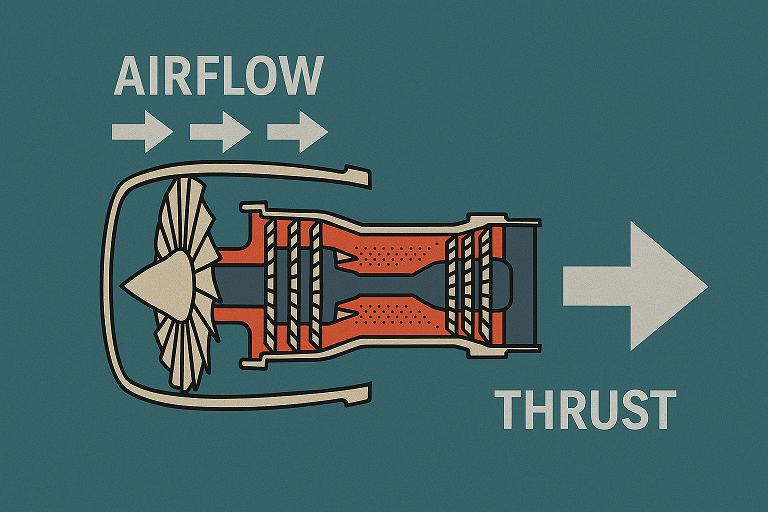
Section 8: Wing Design – The Airfoil
Airfoil is the shape of the wing, crucial for efficient lift.
Key properties:
- Camber: Curvature of the wing.
- Chord Line: Straight line from leading to trailing edge.
- Aspect Ratio: Wingspan to width ratio.
Annotated diagram of an airfoil with camber, chord, leading/trailing edges.
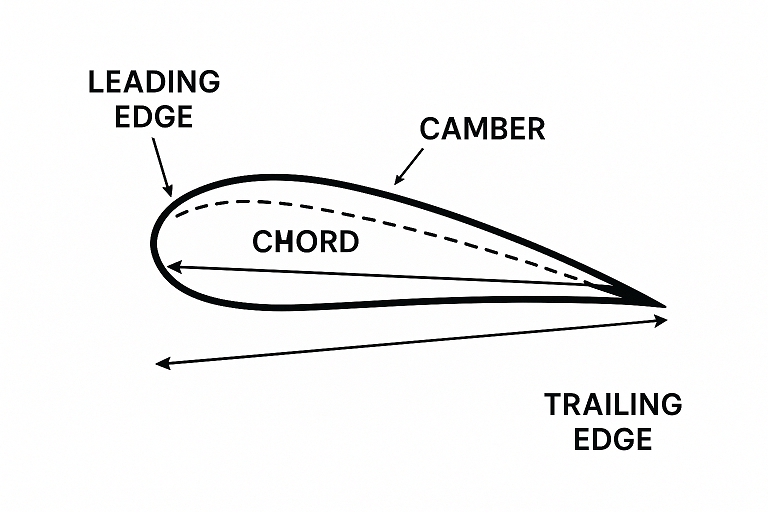
Section 9: Real-World Conditions – Turbulence, Temperature & Altitude
Environmental factors that affect flight:
- Turbulence: Irregular airflow – affects stability.
- Temperature: Affects air density → impacts lift.
- Altitude: Higher = thinner air = less lift and engine efficiency.
Chart or infographic showing how lift changes with altitude and temperature.
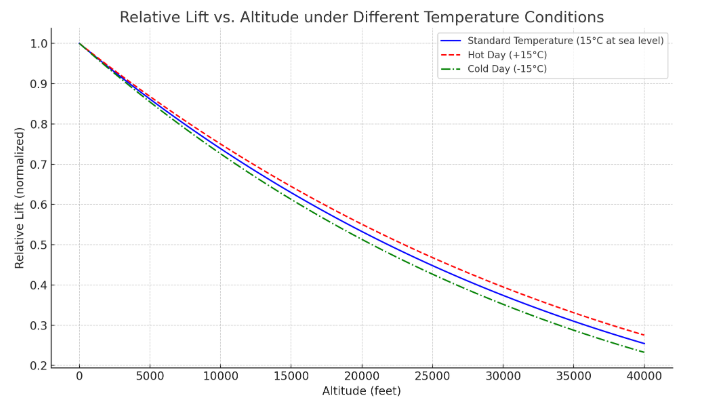
Section 10: Putting It All Together – How Planes Fly
Flight is a delicate balance of forces:
- Thrust vs Drag
- Lift vs Weight
By managing engine power, wing shape, and control surfaces (like ailerons, rudders, and elevators), pilots maintain stable flight.
Flight diagram showing an aircraft in level flight with force vectors balanced.
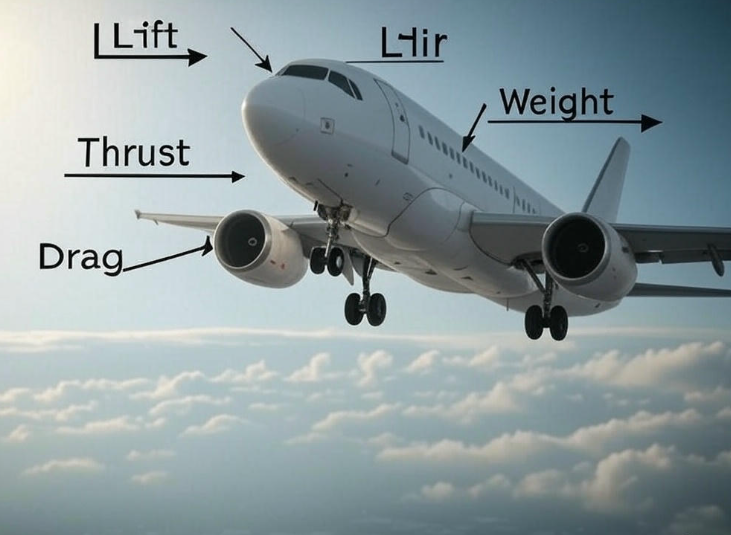
Conclusion: The Elegant Science of Flight
Flight is not just magic, it’s a perfect blend of physics, engineering, and design. Understanding the theory of flight and aerodynamics deepens our appreciation for the marvel that is aviation.
Whether you’re an aspiring pilot, engineer, or curious learner, the sky is no longer the limit .it’s a laboratory.




Your article helped me a lot, is there any more related content? Thanks!
Hi , We will post related article. some related videos:https://www.youtube.com/@pilotxtrainer1280/videos